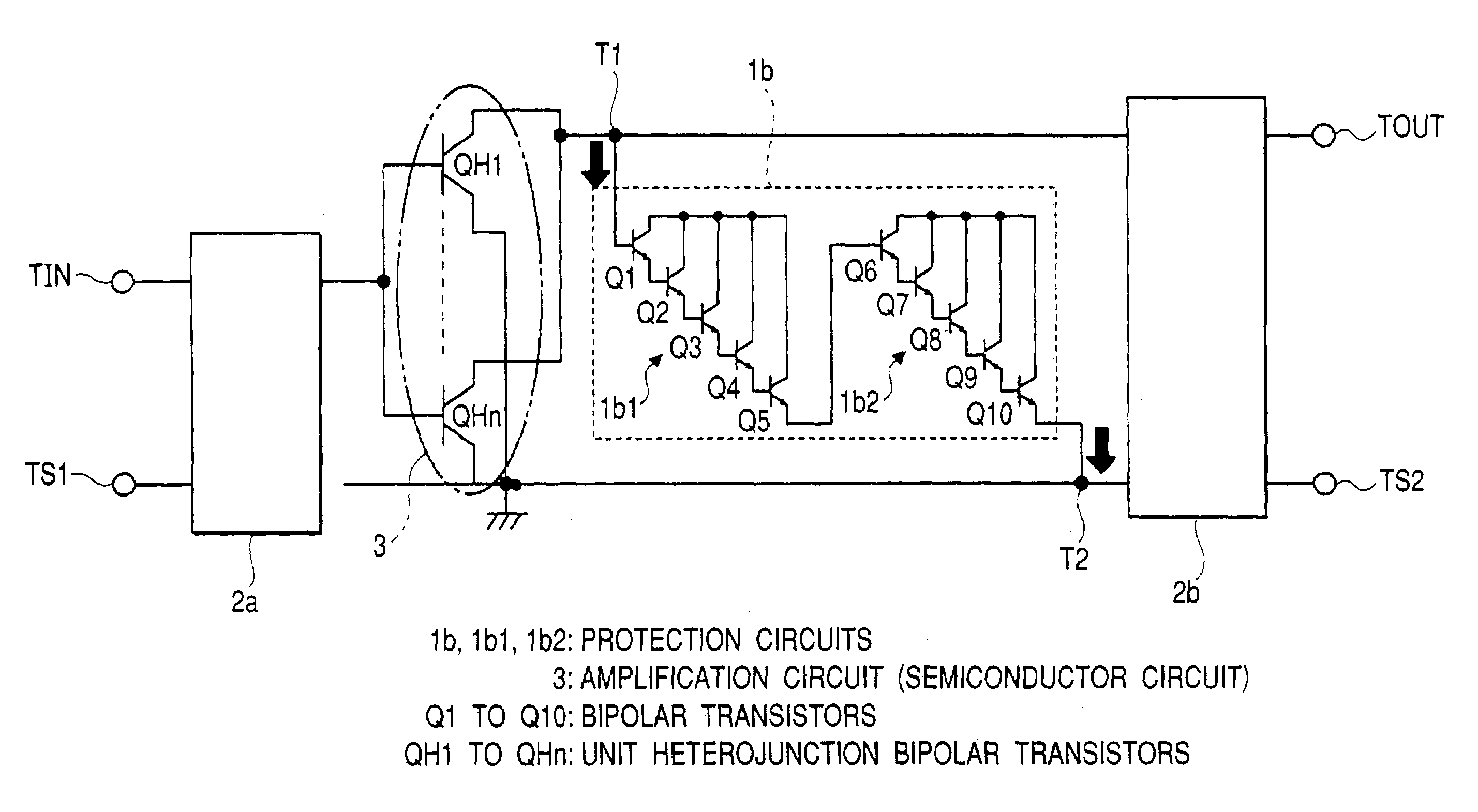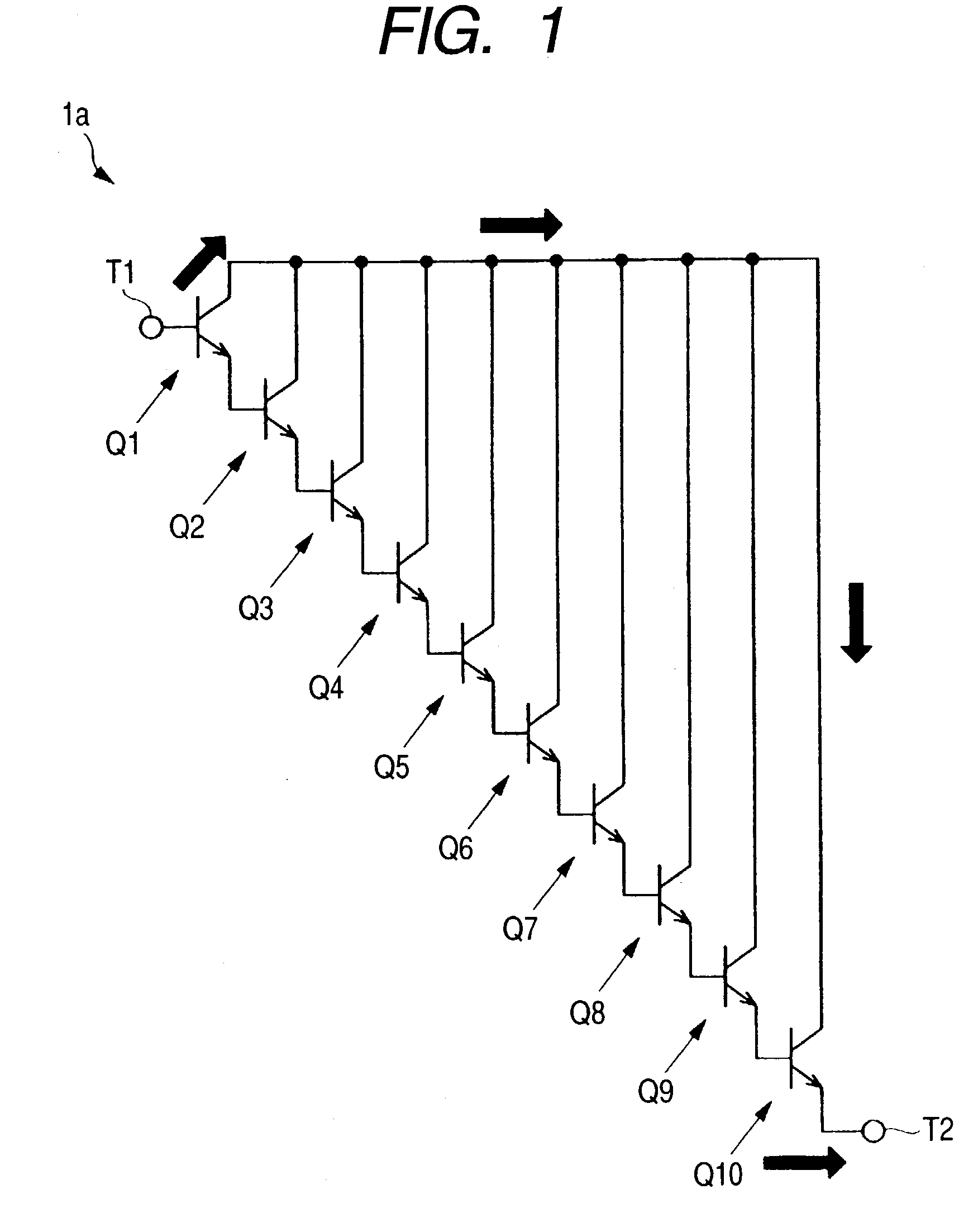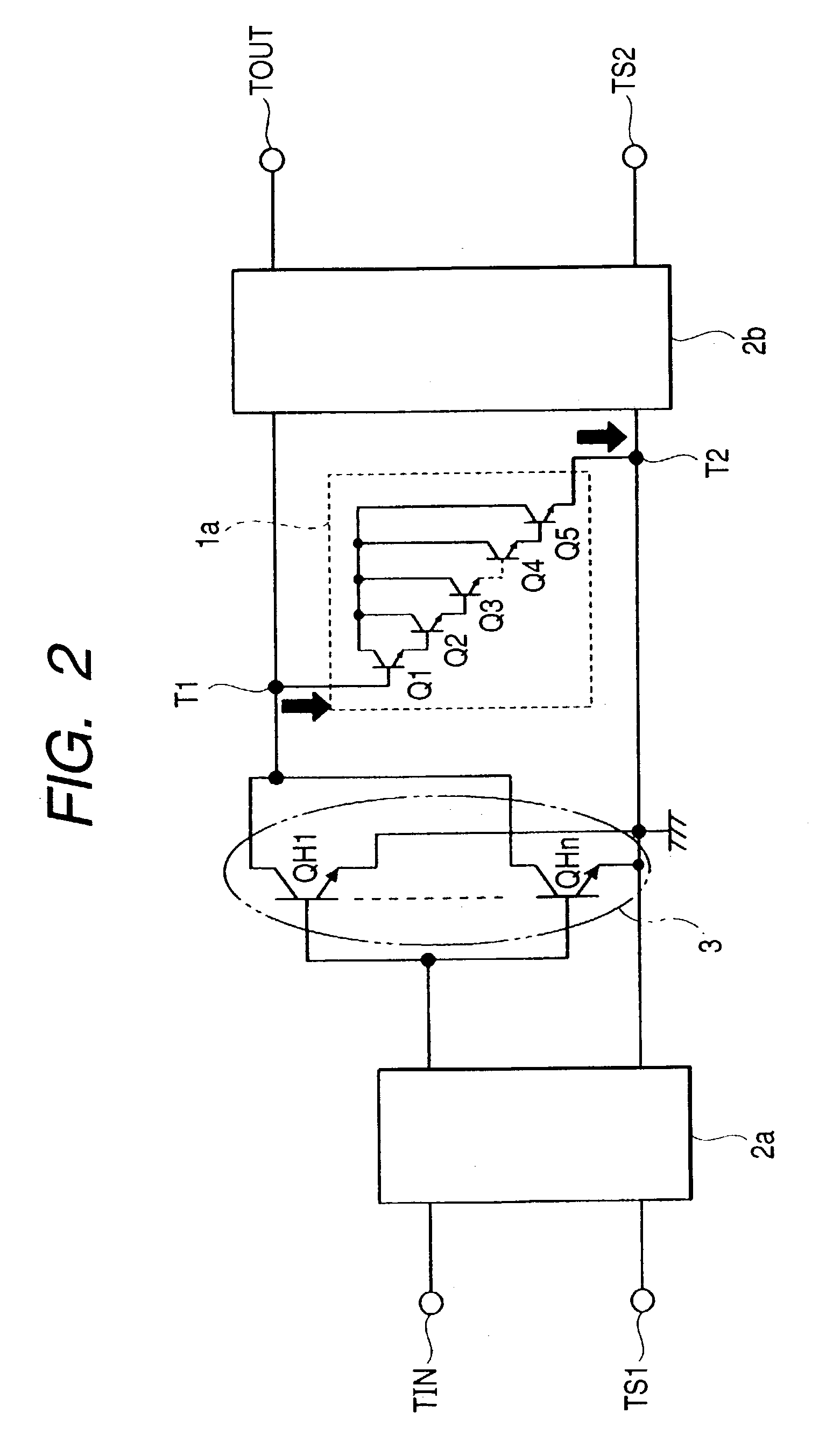Semiconductor protection device
a protection device and semiconductor technology, applied in the direction of transistors, pulse techniques, electronic switching, etc., can solve the problems of inability to obtain sufficient protection circuits, increase the cost of semiconductor devices, and increase the area of semiconductor devices, so as to avoid deterioration, increase the cost of semiconductor devices, and avoid deterioration
- Summary
- Abstract
- Description
- Claims
- Application Information
AI Technical Summary
Benefits of technology
Problems solved by technology
Method used
Image
Examples
first embodiment
[0077]The inventors herein studied and, during development of a high-output amplifier for a radio communication device such as a vehicle telephone or portable telephone, found a phenomenon such that when a load impedance fluctuation test is conducted, an HBT (Heterojunction Bipolar Transistor) as a component of the high-output amplifier deteriorates or is destroyed. The phenomenon was analyzed and a result of the analysis that the HBT deteriorates or is destroyed since a high voltage is applied to the HBT temporarily. The load impedance fluctuation test is a test of measuring an influence on an internal circuit, which is exerted when the load of the amplifier is fluctuated.
[0078]In the first embodiment, therefore, by electrically connecting a protection circuit (protection device) for clamping voltage in a forward direction, a reverse direction, or in both of the forward and reverse directions to an output of the amplifier constructed by HBTs, that is, between the collector and emit...
second embodiment
[0087]In a second embodiment, the protection circuit is divided into a plurality of blocks, and a group of a plurality of bipolar transistors which are Darlington connected is provided for each block.
[0088]FIG. 5 shows an example of a protection circuit 1b of the second embodiment. In the second embodiment as well, the protection circuit 1b has the ten bipolar transistors Q1 to Q10. In the second embodiment, the protection circuit 1b is divided into, for example, first and second blocks of two protection circuits 1b1 and 1b2. The two protection circuits 1b1 and 1b2 have the same number of bipolar transistors Q1 to Q10. The protection circuit 1b1 in the front stage has the five bipolar transistors Q1 to Q5 whose collectors are electrically connected to each other and which are Darlington connected. The emitter of the lowest bipolar transistor Q5 of the protection circuit 1b1 is electrically connected to a terminal T3. The terminal T3 is electrically connected to a terminal T4 via a l...
third embodiment
[0094]In a third embodiment, a collector area of a plurality of bipolar transistors for the protection circuit is shared. FIG. 8 is a plan view of a main portion of the substrate 4S showing an example of the device layout of the protection circuit of the third embodiment. The device layout of the protection circuit 1b shown in FIGS. 5 and 6 of the second embodiment is illustrated here. The plurality of bipolar transistors Q1 to Q5 constructing the protection circuit 1b1 of the protection circuit 1b are formed in a common collector region (a collector layer and a sub collector layer) 8Ca. The plurality of bipolar transistors Q6 to Q10 constructing the protection circuit 1b2 of the second block in the protection circuit 1b are formed in a common collector region (a collector layer and a sub collector layer) 8Cb. The collector regions 8Ca and 8Cb are insulated from each other. With the layout, common connection of the collectors shown in FIGS. 5 and 6 is realized. Specifically, the col...
PUM
 Login to View More
Login to View More Abstract
Description
Claims
Application Information
 Login to View More
Login to View More - R&D
- Intellectual Property
- Life Sciences
- Materials
- Tech Scout
- Unparalleled Data Quality
- Higher Quality Content
- 60% Fewer Hallucinations
Browse by: Latest US Patents, China's latest patents, Technical Efficacy Thesaurus, Application Domain, Technology Topic, Popular Technical Reports.
© 2025 PatSnap. All rights reserved.Legal|Privacy policy|Modern Slavery Act Transparency Statement|Sitemap|About US| Contact US: help@patsnap.com



